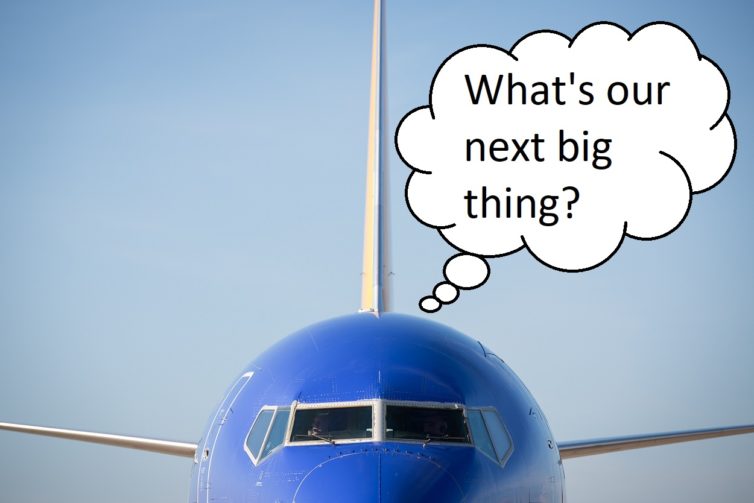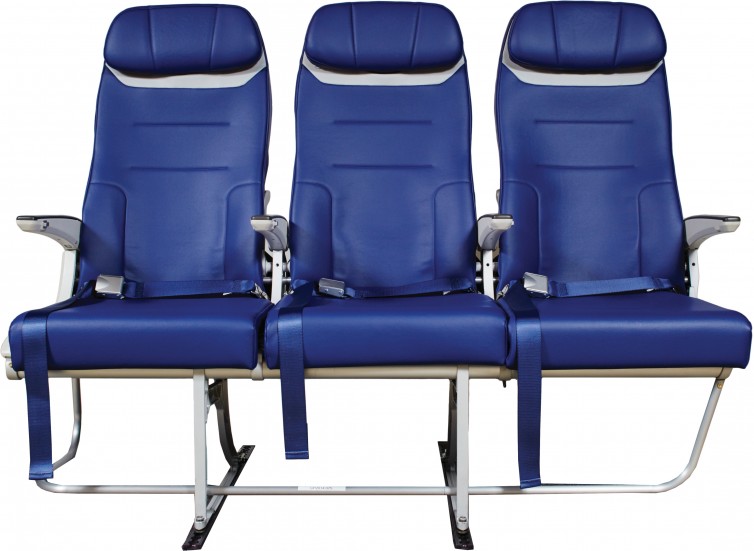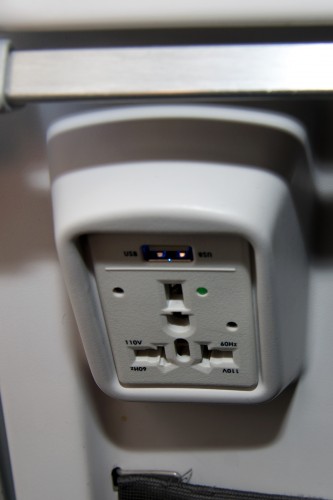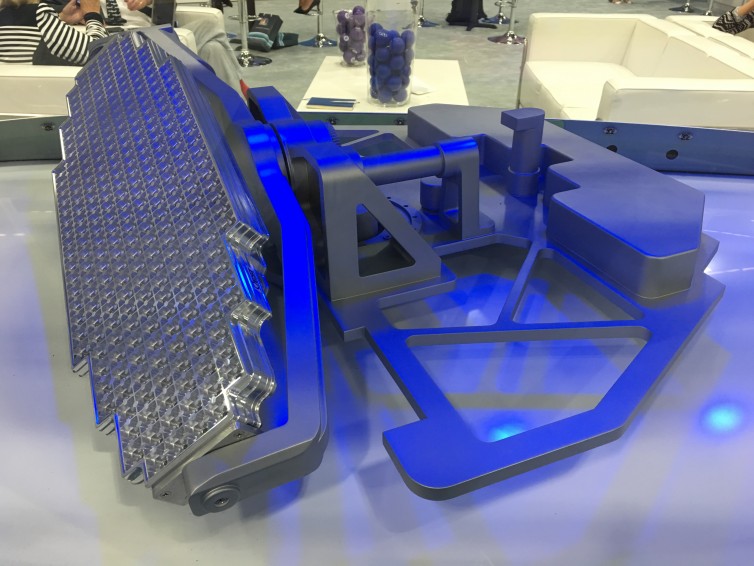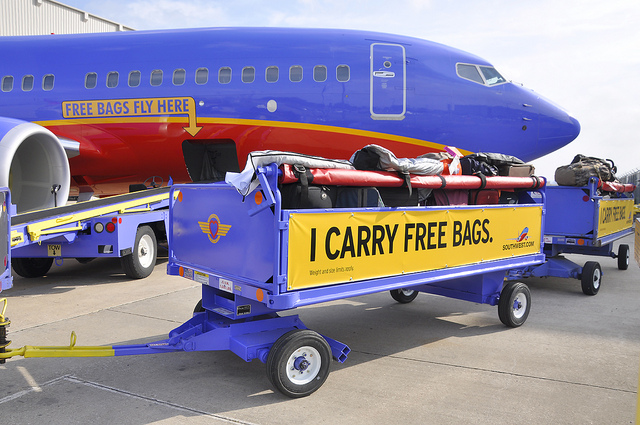What’s Next for Southwest Airlines? An Elite Flyer’s Wishlist
In 2016, I wrote a piece titled Nine Reasons Why I Think Southwest is the Best. For me, those nine reasons stand, even today. I still fly Southwest enough to renew my A-List elite flyer status annually. They are still my first choice when booking travel. There was a time not long ago that I would go out of my way to fly Southwest, and the overwhelming majority of my 20-30 trips a year were with the LUV airline. However, I would be remiss not to recognize that my mix of airlines flown is increasingly more diverse.
The airline’s piece of my overall business has been shrinking. This is a trend that I’ve been cognizant of on the periphery for a few years now. It is something I have long ignored because so much of what makes me an AvGeek is tied to my love, study, and ridership of Southwest. Many of my best aviation memories are linked to the airline. In December of 2017, I finished my most recent academic pursuit and received an M.A. in Organizational Leadership. My academic team and I frequently joked I minored in “Southwest Airlines” because so many of my projects focused on the company, their culture, and leadership philosophy. All of this, plus gobs of friends who are Southwest employees, I honestly feel as if I’m an honorary part of the family.
Here’s the tough question: If Southwest is always my first choice when picking a flight, why am I riding the other guys with more frequency? I have given this a lot of thought and I don’t think that this trend is because Southwest is doing anything particularly wrong. Rather, I think the competition has, in some cases, become way more competitive.
I have long kept a wishlist for the airline. Perhaps the implementation of a few of these would help the airline pull ahead of the competition where, in my mind, they have historically always been. Without further ado, my wishlist, presented in David Letterman-reverse countdown style.
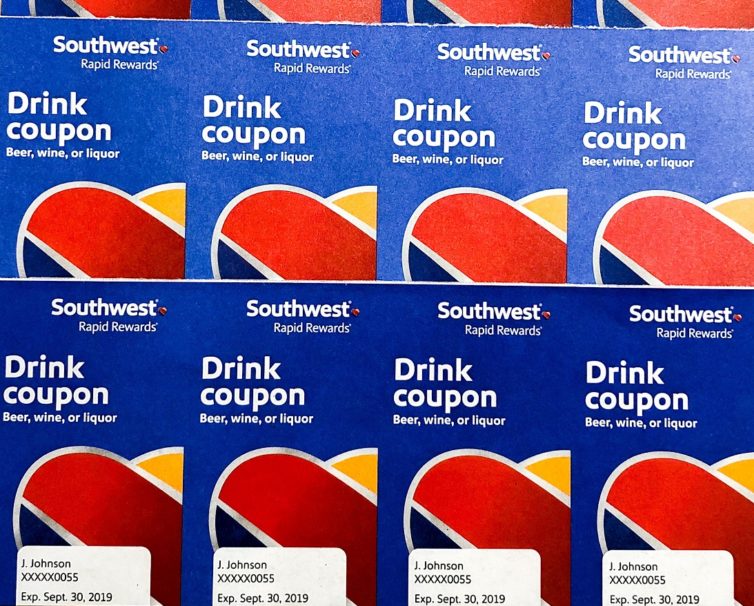
Southwest drink coupons. Upcoming SWA flight? Thirsty? Leave a comment and we’ll hook you up. One per person, limit five. Be sure your email address is current.
Southwest Airlines occasionally sends Rapid Rewards members coupons redeemable for free adult beverages. The magic ratio seems to be four coupons for ten one-way flights.
Note: The definition of one-way flight is something that seems to confuse folks. If I want to fly from Kansas City to San Antonio, I can pick a non-stop or I can connect in Dallas. Either way, that’s a one-way flight. Unless I book MCI-DAL and DAL-SAT separately. But I digress.
Here’s the problem: I don’t drink alcohol. Now, folks can opt-out of the program, but that’s leaving a perk on the table. I figure I might as well take the coupons and give them away. (Side note: If you spot me in the airport or at an event, say hi. Chances are I’ll have a coupon for you.)
While I love sharing the LUV and being a brand ambassador, I’d really prefer that these hard-earned coupons were redeemable for something I could actually use. As an example: Coupons for free or discounted WiFi would be nice, assuming the airline can get their IFC provider in check…but more on that later. Heck, even the ability to convert coupons into kick tails (employee recognition devices) would be neat.
6. Accelerate new seat roll-out and extend deployment to the -700s as well.Over three years ago, I wrote about Southwest’s new B/E Aerospace Meridian seats. In my opinion, they are a dramatic improvement over the old Innovator II seats, which are long past their prime. The extra space afforded by the Meridians is much appreciated, and something I look forward to. There is a major disparity between the comfort of new or updated planes, and the rest of the fleet. I’m sad to report that the vast majority of planes servicing my own Midwest-centric travel don’t have the Meridians. I’d estimate 75% of my flights still sport the structurally-tired Innovator IIs. Some of my recent flights have been with Innovator IIs reupholstered with the blue covering initially introduced with the Meridians. This doesn’t bode well for my hopes of seat upgrades.
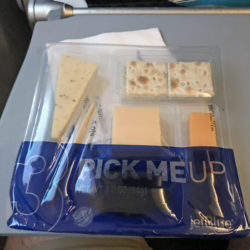
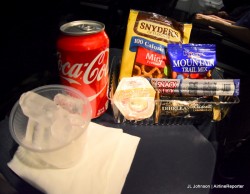
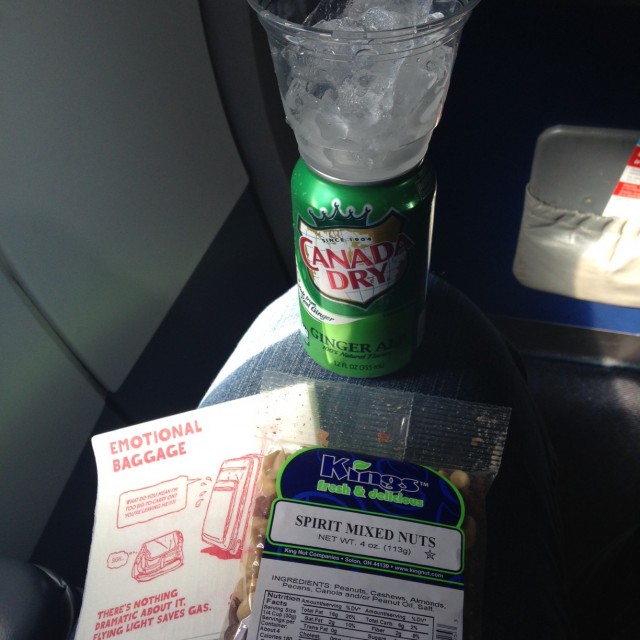 5. I’m ready for buy on-board.
5. I’m ready for buy on-board.
After the much-maligned termination of peanuts from onboard service, the airline’s go-to snack is now the lowly pretzel. Some flights offer Belvita breakfast crackers, Wheat Thins, or something comparable. But all of these options are crackers, and that no longer cuts it. The airline’s average miles flown per flight has risen nearly 50% since 1999, and it generally rises each year. Southwest offers transcons, and will soon launch service to Hawaii. It’s time to offer something more substantial. I’m happy to pay, or maybe apply the value of my drink coupons to discount a snack. To sweeten the attraction of this, I’m going to use two words that are irresistible to airline execs, even those at America’s most LUV’d airline: Ancillary revenue.
Side note: I’m writing this bit while en-route from RSW to MKE wishing I had time to stop for a quick meal before boarding. I’m now daydreaming of buy-on-board options offered by other airlines. The always-solid Alaska Airlines buy-on-board comes to mind. In my best Homer Simpson impression: “Mmmm, cheese plate.”
4. USB power would be niceAs discussed above, Southwest’s flights are getting longer. Add that the airline (correctly, in my opinion) opted for a BYOD (bring-your-0wn-device) entertainment solution. A need for power here seems a no-brainer. Furthermore, the airline recently announced expanded access to their entertainment library, which now includes on-demand movies which used to cost $5 each. This is great news, but again underscores the need for power.
I had the opportunity to ask Southwest CEO Gary Kelly about power options at a media event a few years back. Even then, the lack of power cast a shadow on the new Meridian seats and cabin refresh which were big news. Mr. Kelly said it was something they had considered and it might still be an option. I’m always happy to compromise; perhaps the airline could partner with a company such as FuelRod to sell/swap or rent chargers. The way I see it, this would be a very “Southwest” approach to solving the large and ever-growing problem.
Again with those magic words: Ancillary revenue.
3. How about some reliable Wifi?Four years ago I wrote about Southwest’s BYOD entertainment and reviewed their IFC (in-flight connectivity) provider, then known as Row-44. The IFC portion of that story has not aged well. Constant unreliability and slowness of Southwest’s IFC solution have become a major pain point for customers and employees alike. As reported by The Business Journals, the issue has become so bad that the airline has repeatedly addressed it with cabin crew through various memos. While the complaints have existed for a while, the potency of the problem seems recently particularly pronounced.
Southwest’s IFC issues are not new. This came up at a Southwest-hosted media event in late 2015. Even then, shortcomings in expectations with the vendor were acknowledged by airline senior officials. The airline was said to be working with their partner GEE to address this in the coming months. I have long hoped for the improvements to come. Sorry to say, no progress that I can measure. If anything, it has gotten worse.
I reached out to Southwest for comment on their go-forward strategy. A representative replied with the following:
In December 2016 we issued a press release with the following: In mid-2017, Customers will be able to browse the Internet at increased speeds as a result of an expected bandwidth increase of at least three times more than what they currently experience, with an additional expected bandwidth increase in mid-2018. Connectivity speeds are expected to increase.
Global Eagle Entertainment has increased bandwidth speeds by nearly 7x compared to late 2016.
The company’s official position stands in stark contrast to my reality, and the experience faced by the droves of folks complaining on Twitter. How many have simply given up, accepted the fact that GEE is terrible, and don’t even bother trying? Is this the result of too many A-List Preferred members hogging bandwidth? Is it a hardware issue, or is GEE simply letting their acquired IFC product die on the vine?
So, what’s next for IFC? Tara Bamburg, Southwest’s Manager for WiFi and Inflight Entertainment, was able to confirm when I contacted her that that “MAX deliveries are coming from Boeing line-fit with Panasonic WiFi equipment.” This was music to my ears, but since reaching out the airline has since terminated their relationship with Panasonic.
Southwest declined to comment on the possibility of replacing the existing GEE product on already equipped planes. Allowing a solution with such a terrible track record to persist is a mistake. The airline would do well to hurry on a solution as IFC offerings by airlines across North America are only getting better. Of note: Ted Christie, President of Spirit Airlines is now claiming that “By Summer 2019, every plane in our fleet should be fully equipped with Thales’ state-of-the-art connectivity service. Consider the reality of that statement: I’m comparing Southwest to Spirit. This would have been unheard of even a few years ago.
2. Priority BagsWith Southwest Airlines, every passenger has the option to check up to two bags free of charge. Understandably so, lots of folks do it. As a frequent business traveler, this is great news for me in that there is typically plenty of room for my carry-on.
However, I do sometimes check a bag and find myself impatiently waiting at crowded carousels. Some airlines have priority baggage for elite flyers or those who pay for premium seating. I have experienced it a few times while treating myself. There’s something special about your bags being the first to arrive and being able to get on with your day. I’d love it if Southwest would do something like this for A-Listers. Furthermore, perhaps they could offer priority bag treatment as a “buy up” for folks who find value in such things. Using those magic words again, this is an excellent opportunity for more ancillary revenue.
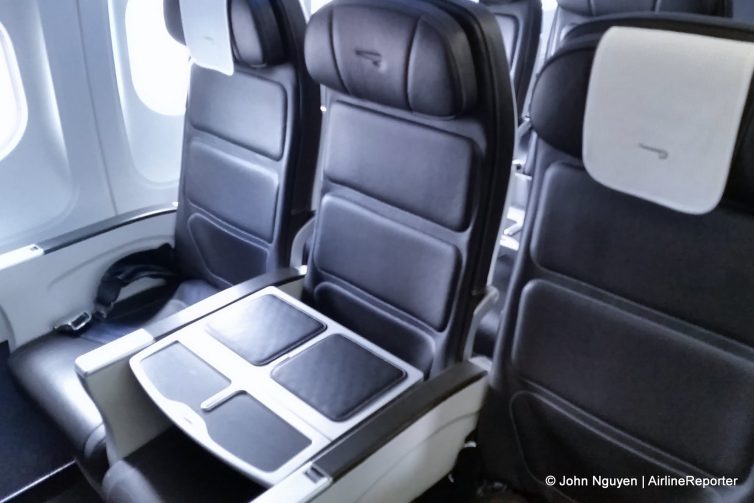
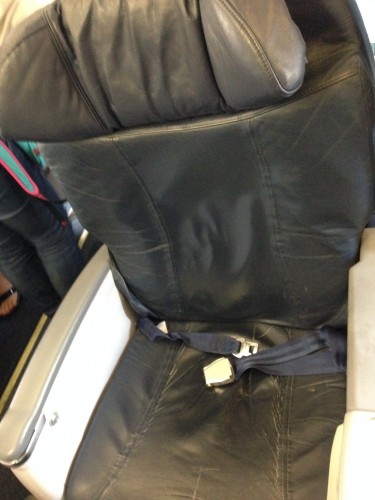 1. Premium seating
1. Premium seating
Sometimes I want some extra room. The Meridian seats help, but as noted above, they are just too uncommon. For the moment, that means when I want to treat myself I have to take my business elsewhere, which I hate to do. I have long said that Spirit Airlines’ BFS (Big Front Seat) strikes the best balance between comfort and value in the American skies. I would love the ability to splurge on an equivalent Southwest option to the BFS. If not a BFS-compatible seat, how about a European short-haul business configuration with a blocked middle seat instead? An empty middle seat works wonders in personal space gains, and a removable headrest cover or seat sign would make for a customizable cabin solution with minimal investment and maximum flexibility.
For years, this level of complexity simply was not possible due to technology limitations. However, in 2017 the airline rolled out a new reservations system developed by Amadeus IT Group referred to internally as “OneRes.” Southwest President Tom Nealon has frequently been quoted stating that OneRes is “..the backbone to much of the airline’s technology.” Now that the airline has the base-level capability to allow folks to pay for premium seating, why not use it? By the way, the new Amadeus IT solution came in at a whopping price tag of $500m, but was expected to pay for itself in “new revenue” through new “capabilities.” Again with the magic words: Ancillary revenue.
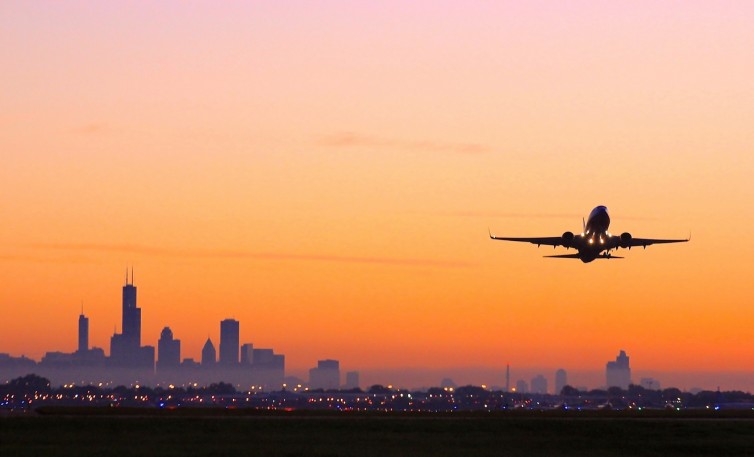
A Southwest Airlines 737 departs Midway Airport leaving behind the iconic Chicago skyline – Photo: Jim Wissemes (CC BY-NC-ND 2.0)
I love Southwest. For years they have connected me to what is most important in my life and I’m happy to be a card-carrying A-List elite flyer. I am passionate about the airline and want what is best for it. I don’t expect that I have all of the answers but would like to think that adoption of even a few of the items I listed off would aid the airline in remaining competitive for the long term.
For most of their recent history, Southwest has been hard at work mastering huge business transformation projects: Integrating AirTran and launching international service, overhauling the backbone of the IT infrastructure, and most recently hurrying to retire old 737-300 and -500 planes in prep for the introduction of the new MAX variant. But all that work has been executed. What seems to remain is what I perceive to be a slow period for business transformation while previously laughable competition is now hot on their tail.
My call to action for Southwest leadership is simple: Embrace your warrior spirit and innovate as if your continued success depends on it – because it does!
The post What’s Next for Southwest Airlines? An Elite Flyer’s Wishlist appeared first on AirlineReporter.
